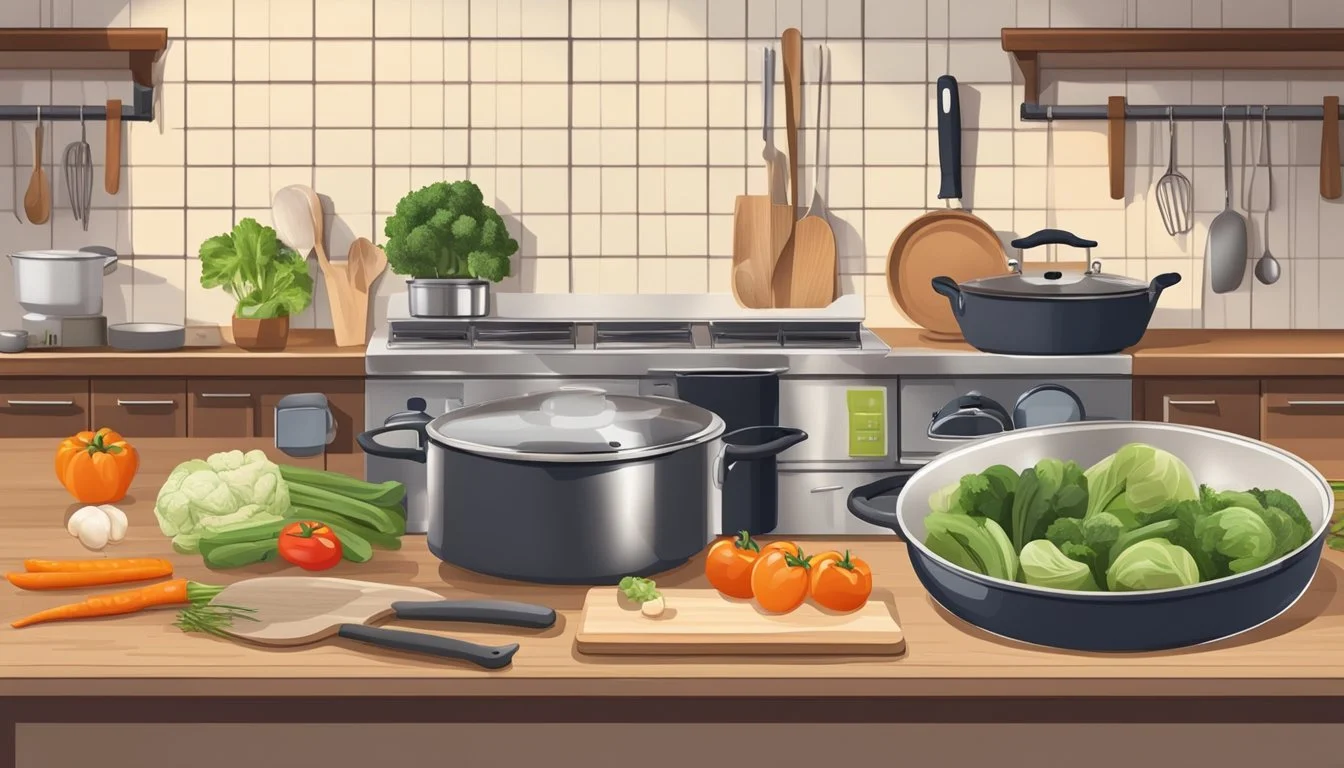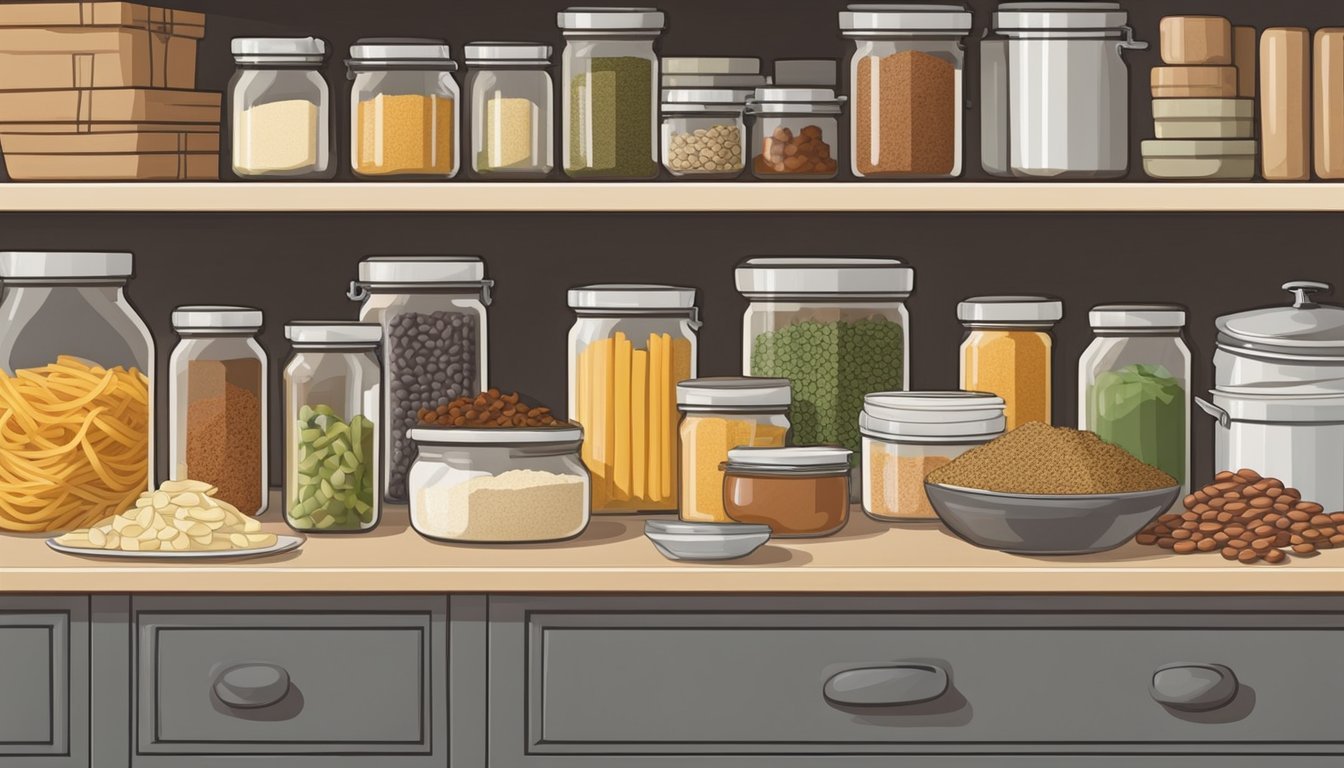How to Cook When You're on a Tight Budget
Smart Strategies for Economical Meals
Cooking on a tight budget is a skill that allows individuals to enjoy nutritious and delicious meals without overspending. It is possible to eat well and save money with proper meal planning and ingredient selection. Stretching the budget to meet culinary needs requires a strategic approach, focusing on affordable yet versatile ingredients. Grains such as rice and pasta, legumes like beans and lentils, and seasonal produce can form the basis of economical meals. Buying items in bulk, looking for sales, and reducing waste are also key habits for thrifty cooking.
Many assume that a limited budget means sacrificing flavor and variety, but that doesn’t have to be the case. Creativity in the kitchen can turn inexpensive components into satisfying and diverse dishes. Utilizing cost-effective proteins such as chicken, ground turkey, or even tofu can result in hearty, healthy meals that appeal to a broad range of tastes. Frozen vegetables and canned goods, such as tomatoes, offer convenience and long shelf lives, ensuring that budget-friendly meals can also be nutrient-rich and flavorful.
Embracing cooking at home as a regular practice not only helps in managing finances but also cultivates cooking skills. It encourages experimenting with different recipes and discovering how to make the most of each ingredient. This approach to cooking can foster a sustainable lifestyle that balances the enjoyment of good food with the reality of a tight budget.
Understanding Your Budget
A successful budgeting strategy for cooking involves delineating between necessary items and those that can be considered luxury add-ons. It’s crucial for one to be aware of how to set a financial plan of action and prioritize their spending to make the most of their available resources.
Setting a Budget
One should start by reviewing their monthly income and expenses to determine how much they can reasonably allocate towards groceries. This process involves identifying all sources of income and tallying up recurring bills and obligations. Once a person has an understanding of their cash flow, they can set a clear budget for food.
Monthly Income Expenses Amount Allocated to Groceries Job, investments Rent, utilities, etc. 10-15% of income (recommended)
Tips:
Track spending: Keep receipts or use a budgeting app.
Review regularly: Adjust as financial circumstances change.
Identifying Essentials versus Luxuries
After setting a grocery budget, differentiating between essential items and luxuries is critical to remain within financial constraints. Essentials include basic staples needed for a balanced diet — things like grains, proteins, and vegetables.
Essentials Luxuries Rice, pasta Imported cheese Seasonal produce Exotic fruits Beans, lentils High-end meats
One should prioritize purchasing essentials and look for sales or bulk purchasing options to save money. Luxuries can occasionally be incorporated, but only if the overall budget allows. A well-planned grocery list can aid in sticking to these priorities during shopping trips.
Strategic Grocery Shopping
Efficient grocery shopping is essential when operating on a tight budget. It involves preparing a comprehensive list, purchasing cost-effective bulk items, and understanding the pricing dynamics at the grocery store to optimize each shopping trip.
Creating a Grocery List
A grocery list acts as an anchor for budget shopping, ensuring one only buys what is needed. One should review their pantry staples and fridge contents to avoid overstocking. By listing items categorically—such as produce, dairy, and grains—shoppers can navigate aisles more swiftly and resist impulse buys.
Buying in Bulk
Purchasing staples in bulk can lead to significant savings, especially for non-perishable pantry items. Shoppers should identify foods that they regularly consume and find affordable bulk options. For example:
Item Bulk Use Rice Staple for meals Beans Stock up, saves money over time Pasta Versatile pantry staple
It's prudent for the shopper to ensure they have sufficient storage space in their home before buying in bulk.
Understanding Prices
Shoppers must educate themselves on regular prices versus sale prices to discern true bargains. One can track prices of frequently purchased items and anticipate sales cycles. Additionally, understanding the unit price—price per ounce or pound—helps compare deals across different sizes and brands. This knowledge enables shoppers to make informed decisions and select the most affordable products without sacrificing quality.
Building a Pantry of Staples
A well-stocked pantry enables home cooks to prepare nutritious meals even when on a strict budget. It focuses on versatile and long-lasting ingredients that form the backbone of countless recipes.
Selecting Cost-Effective Staples
When creating a list of pantry staples, one should prioritize items that offer the best combination of affordability, shelf-life, and versatility. Grains such as rice and pasta are fundamental due to their low cost per serving and substantial shelf stability. Beans and lentils, whether dried or canned, provide an inexpensive source of protein and fiber. Potatoes and onions enhance a variety of dishes and have a long storage life. Canned tomatoes and chickpeas are convenient for quick meals, and oats serve for breakfasts and in baking. The inclusion of garlic, olive oil, and a selection of spices like salt and pepper will add depth and flavor to meals without a significant financial burden.
Grains: Rice, Pasta, Oats
Proteins: Beans, Lentils, Chickpeas, Canned beans
Vegetables: Potatoes, Onion, Canned tomatoes, Garlic
Flavour enhancers: Olive oil, Spices
Managing Pantry Inventory
Maintaining an organized pantry is essential for budget cooking to prevent waste and to know when to replenish supplies. One should regularly check expiration dates and use a first-in, first-out system; ensure that older items are at the front and used first. Creating an inventory list can be helpful, whether it’s a physical list attached to the pantry door or a digital one on a mobile device. This list should be updated as items are used and restocked, ensuring one always knows what is on hand.
First-in, first-out method
Regular checks for item expiry
Maintaining an updated list of inventory
Meal Planning and Preparation
Effective meal planning and preparation are essential for cooking on a tight budget. By strategically planning meals, one can minimize waste and maximize efficiency.
Planning Your Meals
One should begin meal planning by assessing current food inventory and identifying items that need to be used up. Next, they should draft a meal schedule that incorporates these items, complemented by affordable staples such as rice and beans. Utilizing sales and coupons can further reduce expenses. Additionally, planning around versatile ingredients, like chicken, can result in a variety of meals without monotony.
Monday: Chicken stir-fry with brown rice
Tuesday: Bean chili with leftover rice
Wednesday: Chicken tacos using leftover stir-fry chicken
Thursday: Stuffed bell peppers (What wine goes well with stuffed bell peppers?) with chili filling
Batch Cooking
Batch cooking refers to preparing multiple portions of a meal at once. It's cost-effective as one can buy ingredients in bulk, which is often cheaper. Cook large quantities of meals such as casseroles or goulash, then portion and freeze for future consumption. This approach saves both time and money since the per meal cost is reduced and it prevents the need for take-out on busy days.
Freezer Meal Ideas
Bolognese sauce: Freeze in portions and serve with pasta or as a baked potato topping.
Soup: Cook in bulk and freeze in single servings for easy lunches (What wine goes well with lunch?).
Utilizing Leftovers
Leftovers should be viewed as ingredients for new meals. One could transform last night's roasted vegetables into a savory omelette or repurpose a beef roast into barbecue beef sandwiches. Storing leftovers properly ensures they remain appetizing and safe to eat. Labeling containers with contents and date will help keep track of what's available.
Leftover Transformation
Thursday's chicken: Shred for Friday's chicken salad.
Sunday's pot roast: Dice for Monday's beef pot pie.
Adhering to these strategies in meal planning and preparation can lead to substantial savings while still enjoying a variety of nutritious and tasty meals.
Choosing Affordable Proteins
When cooking on a tight budget, selecting proteins that offer the best nutritional value for the least amount of money is crucial. Chicken, eggs, and legumes are among the most cost-effective protein sources available.
Inexpensive Meat Options
Budget-conscious shoppers often find chicken thighs (What wine goes well with chicken thighs?) and hamburger (ground beef) to be less expensive than other meats, like steak or pork chops. Chicken thighs, in particular, tend to be more affordable than chicken breasts and can be used in a variety of recipes, from soups to grilling. They also offer a richer flavor due to their higher fat content. For those who prefer red meat, purchasing hamburger in bulk can save money, and it's versatile enough for dishes ranging from meatloaf to spaghetti Bolognese.
Tuna is another protein-rich option that comes at a lower price point, especially when bought canned. It's an easy addition to salads, sandwiches, and pasta dishes, making it a staple for anyone on a tight budget.
Vegetarian Protein Sources
Eggs are a powerhouse of protein and among the most economical choices for those looking to stretch their dollars. Eggs can be prepared in several ways, such as boiled, scrambled, or as part of a quiche or frittata.
Legumes such as lentils, chickpeas, and a variety of beans are not only inexpensive but also packed with protein and fiber. They can be bought dry or canned and incorporated into soups, stews, or salads.
Tofu, which is made from soybeans, provides a plant-based protein alternative that's often cheaper than meat and can be used in a myriad of cuisines, from Asian stir-fries to vegetarian tacos. Its neutral taste allows it to absorb flavors well, making it a versatile ingredient.
In conclusion, by combining these affordable sources of protein into their meals, individuals can maintain a balanced diet without overstressing their food budget.
Cooking Budget-Friendly Recipes
When money is tight, one's culinary creativity often has to stretch to make meals both affordable and satisfying. The following ideas for breakfast, lunch, and dinner focus on low-cost ingredients and simple preparation methods.
Easy Breakfast Ideas
Brown Sugar Cinnamon Oatmeal: Oatmeal is a cost-effective option that offers endless variations. A simple and comforting choice is to mix in brown sugar and cinnamon for a sweet and warm start to the day.
Baked Eggs in Tomato Cups: Utilize tomatoes and eggs to create an elegant yet affordable breakfast. Hollow out tomatoes, crack an egg into each, and bake until the eggs are set.
Lunches on a Budget
Cheesy Egg Baked Toast: Take a slice of bread, make a well in the center, crack an egg into it, and top with cheese. Bake until the egg is cooked to your liking for a protein-packed lunch.
Bean Burritos: Beans are a frugal staple that can be turned into hearty burritos. Fill tortillas with a mix of seasoned beans, rice, and shredded cheese for a simple, filling meal.
Inexpensive Dinners
Goulash: This dish combines ground beef, elbow macaroni, and tomato paste for a filling and inexpensive dinner option. Use water to adjust the thickness of the sauce.
Ancho Chicken Burritos: Transform a store-bought rotisserie chicken into delicious burritos by combining it with rice, beans, and cheese, wrapped in a soft tortilla.
Pasta: Utilize pasta for its versatility and affordability. Create dishes like spaghetti with marinara sauce or a simple garlic and olive oil toss for a satisfying dinner.
Soup: Making a large pot of soup can be economical, especially when using seasonal vegetables, leftover meats, or beans. Homemade soup can serve as a comforting dinner and provides leftovers for additional meals.
Saving Money with Homemade Alternatives
Creating cost-effective homemade alternatives to high-priced grocery items not only cuts down expenses but also enhances the nutritional value of meals. These alternatives provide the flexibility to use ingredients already in the pantry, reducing waste and additional shopping trips.
DIY Versions of Expensive Items
When budget constraints are tight, one can replace costly grocery items with homemade versions. For example, rather than purchasing premade hamburger helper, one can combine ground beef, pasta, and a simple homemade sauce for a fraction of the cost. Likewise, instead of spending extra on premade hummus, a cost-effective and fresh alternative can be made by blending chickpeas, tahini or a little olive oil, lemon juice, and seasonings. Here's a quick guide on how to create homemade versions of popular items:
Homemade Hamburger Helper: Sauté ground beef, mix with cooked elbow macaroni, and blend with a sauce of milk, cheese, and spices.
Peanut Butter: Process roasted peanuts with a pinch of salt and a touch of honey until creamy.
Hummus: Blend chickpeas with olive oil, garlic, lemon juice, and tahini.
Tomato Soup: Simmer crushed tomatoes with broth, onions, garlic, and herbs.
French Bread Pizza: Top a split baguette with tomato sauce, cheese, and desired toppings; bake until golden.
Burrito Bowl: Layer rice, beans, sautéed veggies, and homemade salsa in a bowl.
Sloppy Joes: Cook ground meat with onions, tomato sauce, and seasonings, serve on a bun.
Baked Tofu: Slice tofu, marinate in soy sauce and spices, then bake until crispy.
Avoiding Convenience Foods
Convenience foods, such as frozen meals or pre-packaged snacks, typically come with a higher price tag and less nutritional value. By opting to make dishes like burrito bowls or sloppy joes at home, one not only saves money but also has control over the ingredients used, resulting in healthier and more personalized meals. For example, a burrito bowl can be easily assembled with rice, beans, freshly chopped vegetables, and homemade salsa. Similarly, making sloppy joes from scratch allows for the adjustment of sweetness and tanginess to personal preference, and it's as simple as cooking ground meat with a few pantry staples. Here are some steps to avoid convenience foods:
Review sales and coupons, then plan the week's meals, including ones like homemade burrito bowls or French bread pizza, which are inexpensive yet filling.
Prepare components, such as rice or baked tofu, in advance to streamline meal preparation during the week.
Swap out store-bought snacks with homemade alternatives like roasted chickpeas or vegetable sticks with hummus, which are healthier and more economical.
Making the Most of Sales and Discounts
Maximizing sales and discounts can transform a tight budget into a more flexible one. By staying alert to the best deals and making intelligent use of available coupons, shoppers can purchase their essential items at a significantly lower price.
Finding the Best Deals
Shoppers should start by scouring the weekly flyers from their local grocery stores, which are often the best source for finding discounts on staples and fresh food. It's advisable to build a meal plan around these deals, focusing on the most affordable and nutritious items. Discount grocers—like Aldi, Costco, or Sam's Club—are also excellent places to find lower prices; although they may offer a more limited selection, the savings can be substantial.
Using Coupons and Rebates
Coupons can be a powerful tool to reduce grocery bills. Savvy shoppers can find them in newspapers, store newsletters, or through affiliate links online. Some stores offer digital coupons on their official apps, allowing customers to select discounts before they shop. Rebates, which provide cash back after a purchase, are another avenue for saving money. Apps and rebate websites can be used to find these offers, which can sometimes be applied to items already in your shopping bag.
Pro Tip: Organize coupons and rebates in advance and be aware of expiration dates to ensure you get the maximum savings possible on each trip to the grocery store.
Nutrition and Health Considerations
Cooking on a tight budget requires careful consideration to maintain both nutritional value and affordability. Balancing the cost without compromising on nutritious ingredients is key to healthy living.
Balancing Cost and Nutrition
When budget constraints are tight, it's crucial to select ingredients that offer high nutritional density for their cost. Whole grains, such as brown rice and whole wheat pasta, provide essential fiber, vitamins, and are generally more cost-effective per serving compared to processed grains. Legumes, including lentils and chickpeas, are also affordable and are rich in protein.
Proteins: It's possible to find less expensive cuts of meat, or to use them sparingly. Alternatively, one might consider canned fish as a cost-effective protein choice with a long shelf life.
Vegetables: Frozen vegetables often provide comparable nutritional value to their fresh counterparts and can be less expensive, especially when out of season.
Healthy Recipes: They can revolve around these staple items, and one can often find recipes specifically designed with budget considerations in mind.
Incorporating Fresh Produce
Fresh produce is a cornerstone of a nutritious diet, but it can be one of the more expensive grocery categories. However, certain strategies can help mitigate costs:
Seasonal Purchases: Buying fruits and vegetables in season is often cheaper and they are usually at their peak nutritional value.
Local Markets: Shopping at local farmers' markets can result in savings on items like mushrooms, green beans, sweet potatoes, and broccoli, which provide substantial nutrients.
Gardening: If space allows, growing one's own produce can be a significantly cost-effective and rewarding way to ensure fresh vegetables are a part of one's diet.
By focusing on whole grains, seasonal produce, and cost-effective protein sources, individuals can create meals that are both nutritious and budget-friendly.
Food Storage and Waste Reduction
Effective food management is crucial for cooking on a tight budget. It involves utilizing proper storage techniques and strategies to minimize waste, ensuring that food lasts longer and nothing goes unused.
Proper Food Storage Techniques
Storing Vegetables:
Most vegetables keep best in a fridge's crisper drawer, which maintains a slightly higher humidity.
To prolong their freshness, root vegetables like carrots and beets can be stored in the fridge in airtight containers or bags with most of the air removed.
Herbs:
Herbs can be wrapped in a damp paper towel and placed in a resealable bag in the fridge to maintain their freshness.
Alternatively, they can be frozen in an ice cube tray with water or oil to be used later.
Butter:
Butter can be stored in its original packaging in the fridge to avoid absorbing outside flavors.
For long-term storage, freeze butter by wrapping it in foil or placing it in an airtight container.
Reducing Food Waste
Freeze Leftovers:
Leftovers should be frozen in portion-sized, airtight containers or bags to extend their life and simplify future meals.
Label and date leftovers before freezing; this helps track how long they have been stored and ensures they are used within a safe timeframe.
Meal Planning:
They should plan meals around ingredients that are already available in the refrigerator and pantry to avoid unnecessary purchases.
Using ingredients in more than one meal throughout the week helps use up what's available and prevents waste.
By following these specific storage methods and focusing on waste reduction practices, individuals can extend the life of their food and make the most of their grocery budget.
Resourceful Kitchen Tips
Cooking on a budget does not necessarily mean compromising on quality or taste. By maximizing kitchen tools and honing basic cooking skills, one can create cheap, easy meals that are both nutritious and flavorful.
Maximizing Your Kitchen Tools
Microwave: It's an energy-efficient tool, suitable for quickly cooking staples like beans and rice, which are affordable and hearty ingredients for budget-friendly meals.
Oven: Although it requires more energy, its capacity can be fully utilized by batch-cooking or preparing one-pot meals that have leftovers to save both time and resources.
Fridge: Proper storage of ingredients like vegetables and eggs can extend their shelf life, ensuring that money spent on groceries does not go to waste. Use clear containers to keep an eye on what you have.
Beans: Convenient for microwaving and can be used in a myriad of recipes from soups to salads.
Vegetables: Roast an abundance of seasonal veggies, which can then become sides, salad toppings, or omelet fillings.
Learning Basic Cooking Skills
Eggs: Learn to cook eggs in different ways - boiled, scrambled, poached - as they are an inexpensive protein that can transform into a meal with the addition of vegetables and rice.
Rice and Beans: Mastering the art of cooking these staples can form the base for numerous dishes. Combine them with a variety of seasonings and vegetables for a complete meal.
Cooking Rice: Use a 2:1 water-to-rice ratio for fluffy rice. It’s a blank canvas for adding other inexpensive ingredients.
Utilizing Beans: Beans are versatile—they can be the main dish, a side, or a hearty addition to soups.
By focusing on resourceful use of kitchen tools and building up fundamental cooking skills, one can consistently prepare budget-friendly meals that are satisfying and healthy.







